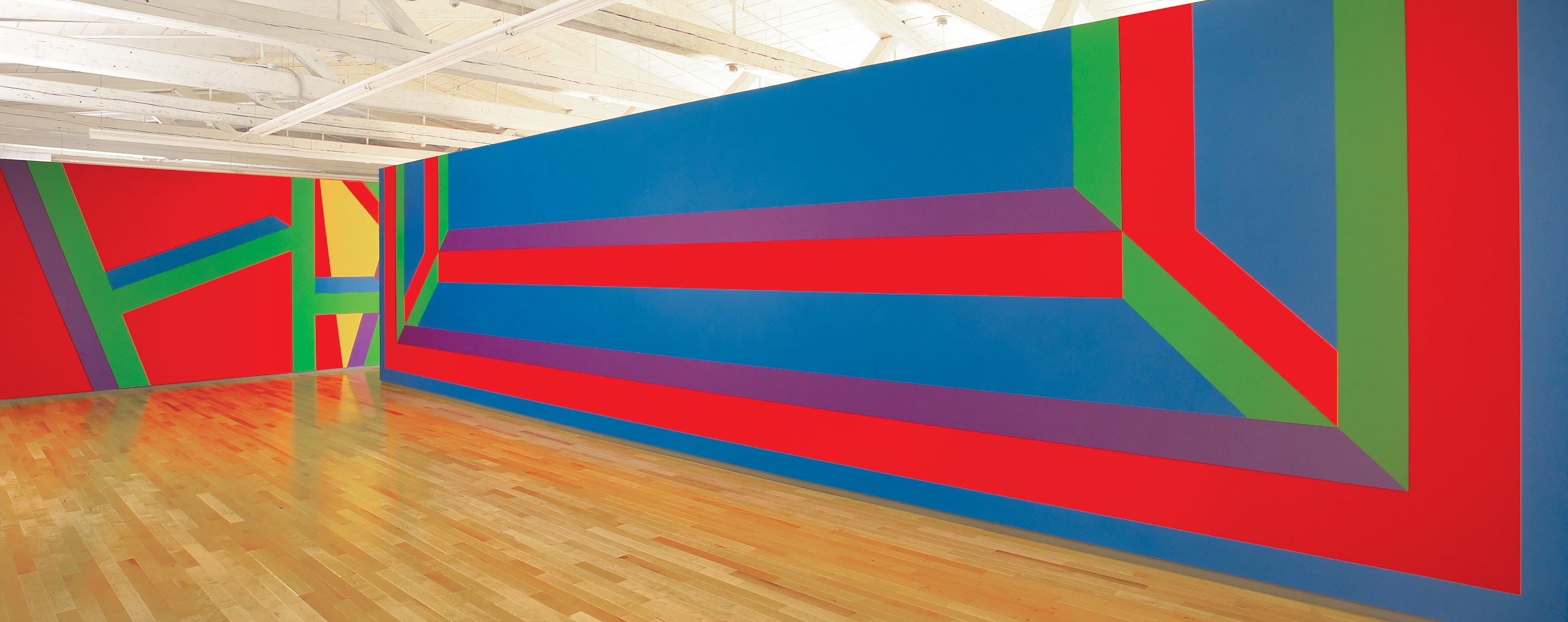Sol LeWitt
- Sol LeWitt
Isometric form.
May 2002
Acrylic paint
Courtesy of the Estate of Sol LeWitt
First Installation
Donald Young Gallery, Chicago
First Drawn By
Anthony Elms, John Hogan, Colleen Kelsey
Executed for an exhibit of new work by Donald Young’s gallery artists, Wall Drawing 1042 is an example of Sol LeWitt’s acrylic wall drawings first created in the early 2000s, which frequently explored open isometric forms using bold acrylic colors. These drawings represent a continuation of the ideas that the artist explored in his isometric form wall drawings created in ink between the 1980s and the early 1990s. As in these earlier ink drawings, the form in Wall Drawing 1042 is drawn using isometric projection, a geometric method used to present three-dimensional objects on two-dimensional surfaces in which the three axes of the object appear equally foreshadowed. Thus, the geometry of the form is self-referential: it does not correspond to any vanishing point on the wall. By using a mode of perspective that makes the form appear to float in a space that does not recede, LeWitt maintains the two-dimensionality of the wall support.
The rectangular isometric form also relates to LeWitt’s open cube structures, which consist of the open framework of cubes constructed in wood or metal, sometimes incomplete (with one or more sides missing), and often joined together as modular units. In Wall Drawing 1042 only the base and the sides of the rectangular form are drawn, suggesting that the shape continues beyond the boundaries of the wall.
As with other acrylic wall drawings from this time period, LeWitt uses a vibrant color palette of primary and secondary colors. The result is an opaque paint surface, where perspectival space and precise forms are alive with optical color vibration.


